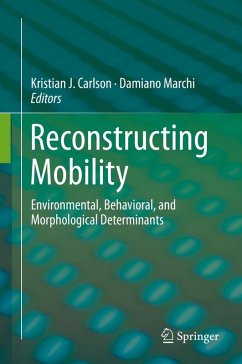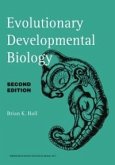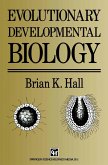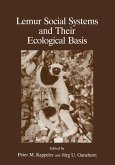For decades, scientists have relied on the concept of mobility in describing lifeways of past and present human populations. However, studies of mobility tend to focus on one aspect of the many factors that define and contribute to it. It is the position of the scientists contributing to this book that mobility needs not be a narrowly defined concept (e.g., distance travelled), but rather should embrace a variety of factors.
Reconstructing Mobility assembles a collection of experts to provide a current account of different approaches in the study of mobility, including traditional, comparative and experimental approaches. The work presented here strives to tease apart environmental effects that transcend traditional categories (e.g., coastal versus inland, mountainous versus level, arboreal versus terrestrial). Since the environment undoubtedly impacts mobility of a wide variety of animals, insights into human mobility can be improved by extending investigations to comparable environmental influences on mobility in other animals in general. Moreover, the book aims to stimulate new theoretical perspectives that adopt a holistic view of the interaction between intrinsic (i.e. skeletal) and extrinsic (i.e. environmental) factors influencing differential expression of mobility. Such an integrative approach, when coupled with a new emphasis on mobility as types of activities rather than activity levels, offers fresh, insightful perspectives on mobility and how it might affect the musculoskeletal system.
In pursuing these aims, the editors have assembled contributions from a diverse collection of researchers. In each chapter, contributors explicitly define the concept of mobility as it relates to their particular research questions. Exciting results from non-primate animal models and experimental studies, as well as more traditional approaches to studies of human mobility, are featured. We believe the breadth of this volume will foster a synergy between several different approaches that ultimately will help advance knowledge about the role of mobility in human evolution.
Reconstructing Mobility assembles a collection of experts to provide a current account of different approaches in the study of mobility, including traditional, comparative and experimental approaches. The work presented here strives to tease apart environmental effects that transcend traditional categories (e.g., coastal versus inland, mountainous versus level, arboreal versus terrestrial). Since the environment undoubtedly impacts mobility of a wide variety of animals, insights into human mobility can be improved by extending investigations to comparable environmental influences on mobility in other animals in general. Moreover, the book aims to stimulate new theoretical perspectives that adopt a holistic view of the interaction between intrinsic (i.e. skeletal) and extrinsic (i.e. environmental) factors influencing differential expression of mobility. Such an integrative approach, when coupled with a new emphasis on mobility as types of activities rather than activity levels, offers fresh, insightful perspectives on mobility and how it might affect the musculoskeletal system.
In pursuing these aims, the editors have assembled contributions from a diverse collection of researchers. In each chapter, contributors explicitly define the concept of mobility as it relates to their particular research questions. Exciting results from non-primate animal models and experimental studies, as well as more traditional approaches to studies of human mobility, are featured. We believe the breadth of this volume will foster a synergy between several different approaches that ultimately will help advance knowledge about the role of mobility in human evolution.
Dieser Download kann aus rechtlichen Gründen nur mit Rechnungsadresse in A, B, BG, CY, CZ, D, DK, EW, E, FIN, F, GR, HR, H, IRL, I, LT, L, LR, M, NL, PL, P, R, S, SLO, SK ausgeliefert werden.









